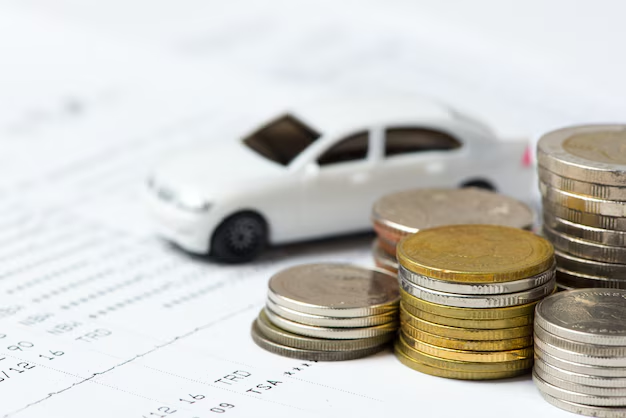Navigating Auto Insurance Liability Coverage: What You Need to Know
When you slide into the driver's seat and start your car engine, taking off onto highways and byways, you're engaging in an activity that requires both freedom and responsibility. This brings us to the concept of liability coverage in auto insurance, a pillar of financial protection for every driver. Whether you’re a seasoned motorist or a new car owner, understanding liability insurance is essential for making informed decisions. This guide will delve into the purpose, types, and nuances of liability coverage, providing you with the knowledge to navigate your insurance needs confidently.
📜 Understanding Liability Coverage: The Basics
Liability insurance is designed to protect you financially if you are found legally responsible for causing damage or injury to another person or their property. Here are the core components:
- Bodily Injury Liability (BIL): Covers expenses related to injuries sustained by other drivers, passengers, or pedestrians in an accident deemed your fault.
- Property Damage Liability (PDL): Covers the cost of damages to someone else’s property, such as vehicles, fences, or infrastructure, that you are responsible for damaging.
Why Is Liability Coverage Important?
Liability coverage is typically mandated by state law, highlighting its importance. Without it, you could face severe financial and legal repercussions following an accident. This coverage ensures that victims of accidents caused by your negligence have a way to recoup their losses, providing peace of mind for all parties involved.
🚦 How Much Liability Insurance Do You Need?
When selecting coverage limits for liability insurance, there are a few considerations to keep in mind:
- State Requirements: Each state has its own minimum requirements for liability coverage. It's essential to be aware of these legal mandates to avoid penalties and ensure you are adequately covered.
- Asset Protection: Consider your financial situation and assets. Higher coverage limits offer more protection, safeguarding personal assets in the event of a significant liability claim.
- Risk Tolerance: Reflect on your comfort level with risk. If you drive regularly or in high-traffic areas, larger limits might be more suitable to cover potential incidents adequately.
Factors Influencing Liability Coverage Needs
- Driving Habits: Frequency and distance of travel can affect your risk level.
- Vehicle Type and Value: High-value or specialty vehicles may require more substantial coverage.
- Traffic and Accident History: Past incidents can contribute to your risk assessment and coverage needs.
🔍 Diving Deeper into Liability Coverage Options
Coverage Limits Explained
The numbers you’ll hear most often regarding car insurance liability are written as three figures, for example, 25/50/25. But what do these numbers mean?
- Per-Person Bodily Injury Limits: The maximum that the insurance company will pay for bodily injury per person involved in an accident.
- Per-Accident Bodily Injury Limits: The total maximum that the company will pay for all bodily injuries in a single accident.
- Property Damage Limits: The limit on what the insurer will cover for repair or replacement of damaged property.
Evaluating the Right Balance
To determine the right balance for your liability insurance:
- Assess Your Financial Exposure: Review your assets—savings, property, and other valuables.
- Consider Additional Coverage (Umbrella Policies): These can offer extra liability protection beyond the standard auto policy.
🤔 Common Questions About Liability Insurance
What Isn’t Covered by Liability Insurance?
Liability coverage doesn’t cover your own injuries or damages to your property. For this protection, you would need collision or comprehensive coverage. Neither does it cover damages and expenses beyond your policy limits; thus, picking appropriate limits is crucial.
Can You Be Insured Above State Minimums?
Absolutely, and it’s often recommended. While state minimums provide basic protection, they may not be adequate in substantial accidents involving extensive medical bills or high property damage repairs.
💡 Key Tips for Selecting Liability Coverage
Here are some strategic tips to guide your insurance choices:
- 📝 Review Policy Details Regularly: Keep up-to-date with policy terms and adjust coverage as your life circumstances change.
- 💼 Consider Your Whole Financial Situation: Ensure that your coverage aligns with your broader financial plan.
- 🚗 Be Aware of Exclusions: Understand what your policy doesn’t cover to avoid surprises down the road.
- 📈 Factor in Inflation and Changing Costs: Costs of medical care and vehicle repairs tend to rise, potentially making state minimums insufficient over time.
🗂️ Practical Takeaways and Insights
Here’s a summary of the crucial points about liability insurance that every driver should know:
- 🔑 Ensure Compliance:
- Verify that you meet or exceed your state's minimum liability requirements.
- 💰 Safeguard Assets:
- Choose coverage limits that protect your personal wealth.
- 🔄 Regular Review:
- Conduct annual insurance reviews to ensure your policy reflects current needs.
- 🚗 Enhanced Protection:
- Consider umbrella policies for broader coverage.
- 📊 Understand Limits:
- Know how each coverage limit functions under your policy.
Making Informed Decisions
Understanding liability coverage is not just about complying with legal requirements but also about protecting yourself against unforeseen financial burdens. By evaluating your liabilities, understanding state mandates, and considering both typical and unexpected scenarios, you can make choice decisions that ensure safety and security on the road.
In the world of auto insurance, liability coverage serves as your ally against the unpredictable nature of driving. Equip yourself with the right knowledge and coverage to navigate your insurance landscape with confidence. Safe and informed travels are just a policy decision away.

Related Topics
- A Comprehensive Guide On Cancellation/Interruption Travel Insurance
- A Comprehensive Guide On Universal Life Insurance
- A Comprehensive Guide To Drone Insurance
- A Comprehensive Guide To Gap Insurance: Decoding Its Benefits, Eligibility, And How To Apply
- A Comprehensive Guide To Maternity Health Insurance
- A Comprehensive Guide To Medical Travel Insurance: Everything You Need To Know
- A Comprehensive Guide To Money-Back Policies
- An Extensive Guide On Crop Insurance
- An Insight Into Employment Practices Liability Insurance (EPLI)
- Demystifying Endowment Policies: Your Ultimate Guide